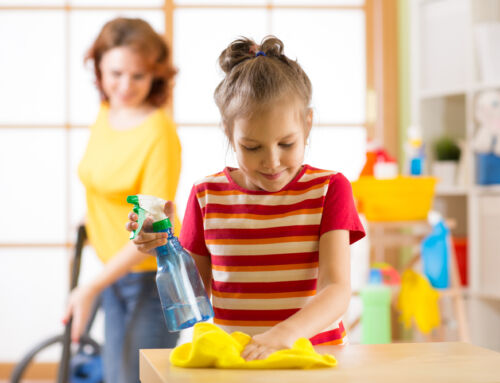In an era where environmental consciousness is paramount, eco-friendly cleaning has emerged as a responsible and sustainable choice for maintaining a clean and healthy living environment. This guide delves into the science behind eco-friendly cleaning, shedding light on how these products work and why they are not only safer for the environment but also for your home. Additionally, we’ll provide some simple DIY eco-friendly cleaning solutions that you can easily incorporate into your cleaning routine.
Understanding Eco-Friendly Cleaning Products
Eco-friendly cleaning products, often referred to as green or sustainable cleaning products, are designed to minimize their impact on the environment while still effectively removing dirt, grime, and harmful contaminants. Here’s what you need to know about the science behind these products:
Ingredients Selection:
-
- Eco-friendly cleaning products prioritize the use of biodegradable and non-toxic ingredients. These ingredients break down naturally, reducing harm to aquatic ecosystems and wildlife.
- Harsh chemicals such as phosphates, chlorine, and volatile organic compounds (VOCs) are minimized or entirely excluded from eco-friendly formulations. This reduces indoor air pollution and helps protect human health.
Surfactants and Their Role:
-
- Surfactants, a key component in cleaning products, lower the surface tension of water, enabling it to penetrate and lift away dirt and grease. Eco-friendly products use surfactants derived from renewable sources, like plant-based oils, instead of petroleum-based alternatives.
- Plant-derived surfactants are biodegradable and less harmful to aquatic life, making them a sustainable choice.
Enzymes and Microbes:
-
- Some eco-friendly cleaners contain enzymes and beneficial microbes that break down organic matter naturally. Enzymes target specific stains, while microbes digest organic waste.
- By harnessing the power of nature, these products offer effective cleaning while reducing the need for aggressive chemicals.
Packaging and Sustainability:
-
- Eco-friendly cleaning products often come in recyclable or refillable packaging to minimize waste. Sustainable packaging choices further reduce their environmental footprint.
Sustainable Cleaning Methods
Eco-friendly cleaning is not just about the products you use but also how you use them. Here are some sustainable cleaning methods to complement your eco-friendly cleaning product choices:
Microfiber Cloths:
-
- Microfiber cloths are highly effective for cleaning surfaces without the need for chemical cleaners. They trap and remove dirt and bacteria using tiny fibers.
- They can be reused many times, reducing the consumption of disposable cleaning materials.
DIY Cleaning Solutions:
-
- Make your own eco-friendly cleaning solutions using simple ingredients like white vinegar, baking soda, and lemon juice. These natural ingredients have cleaning and disinfecting properties.
- For example, mixing vinegar and water in a 1:1 ratio creates an effective all-purpose cleaner.
Reduce Water Usage:
-
- Use water sparingly when cleaning. Opt for mop systems that allow you to control the amount of water applied to the floor.
- Reuse water where possible, such as using leftover dishwashing water for cleaning other surfaces.
Conclusion
The science of eco-friendly cleaning revolves around responsible ingredient choices, sustainable cleaning methods, and a commitment to reducing environmental impact. By understanding the science behind these products and incorporating sustainable cleaning practices into your routine, you can contribute to a cleaner, healthier planet while maintaining a safe and pleasant home environment. Choose eco-friendly cleaning products and methods to make a positive difference for both your family and the Earth.





